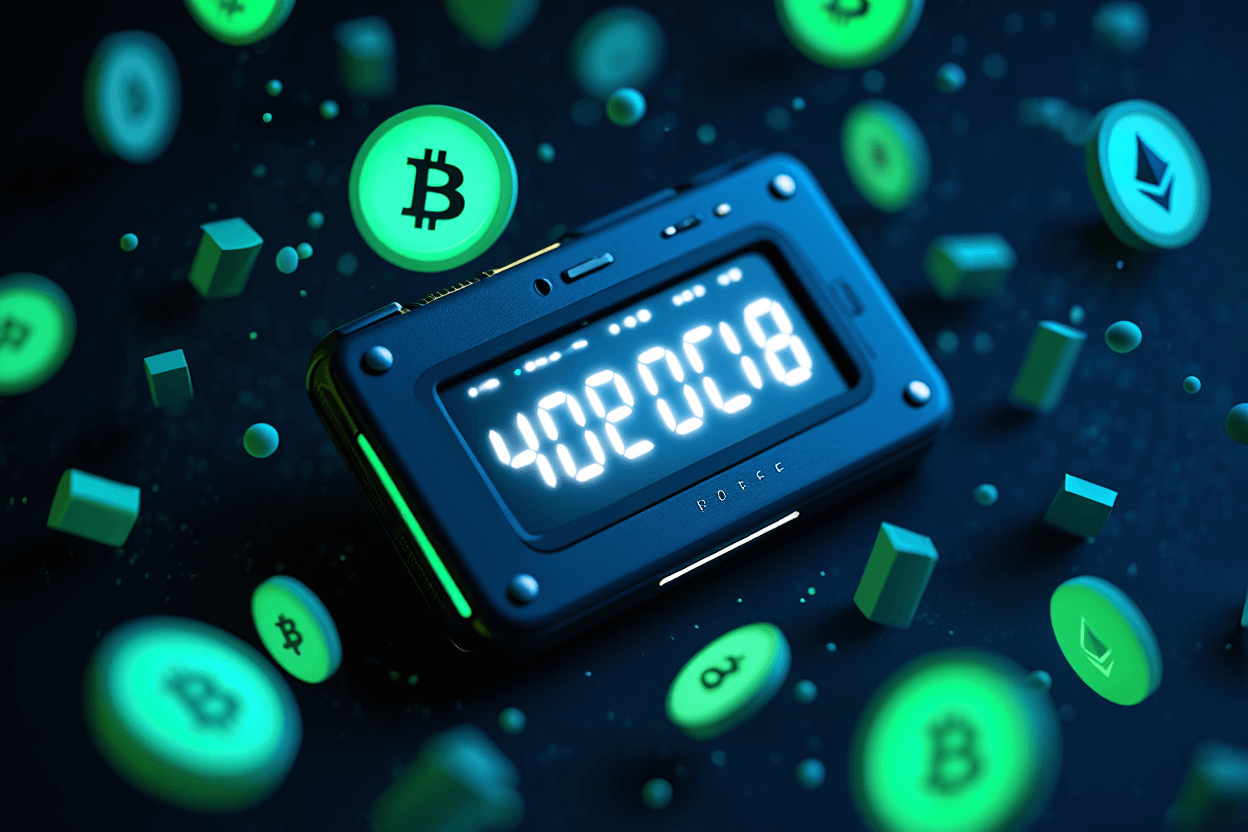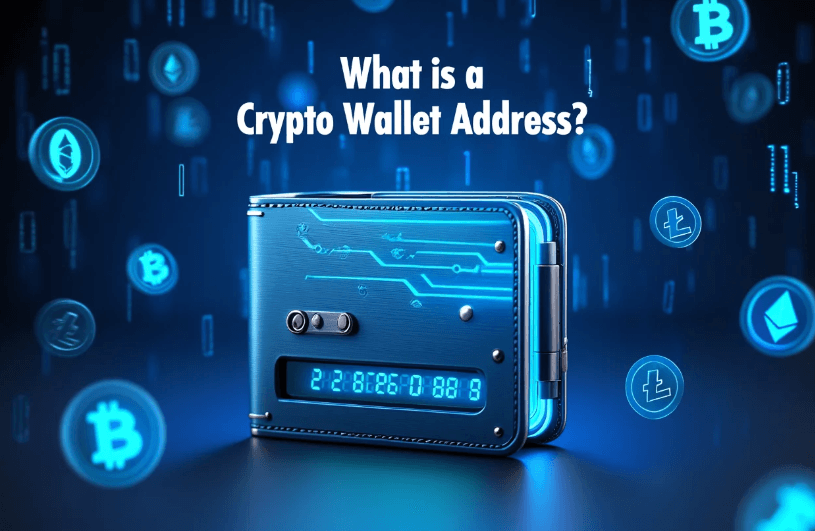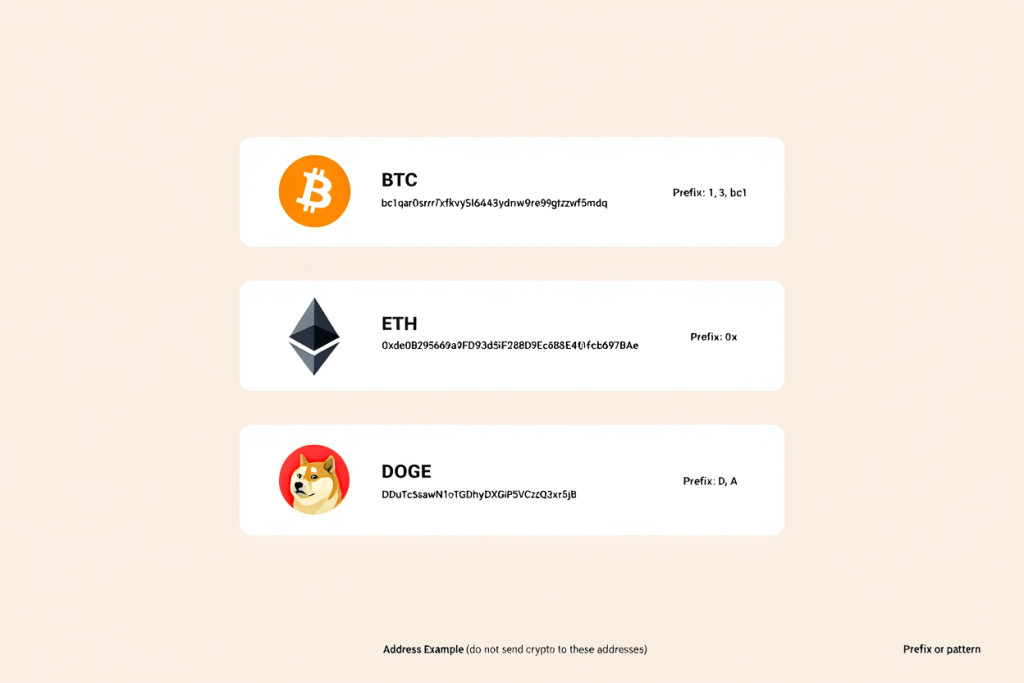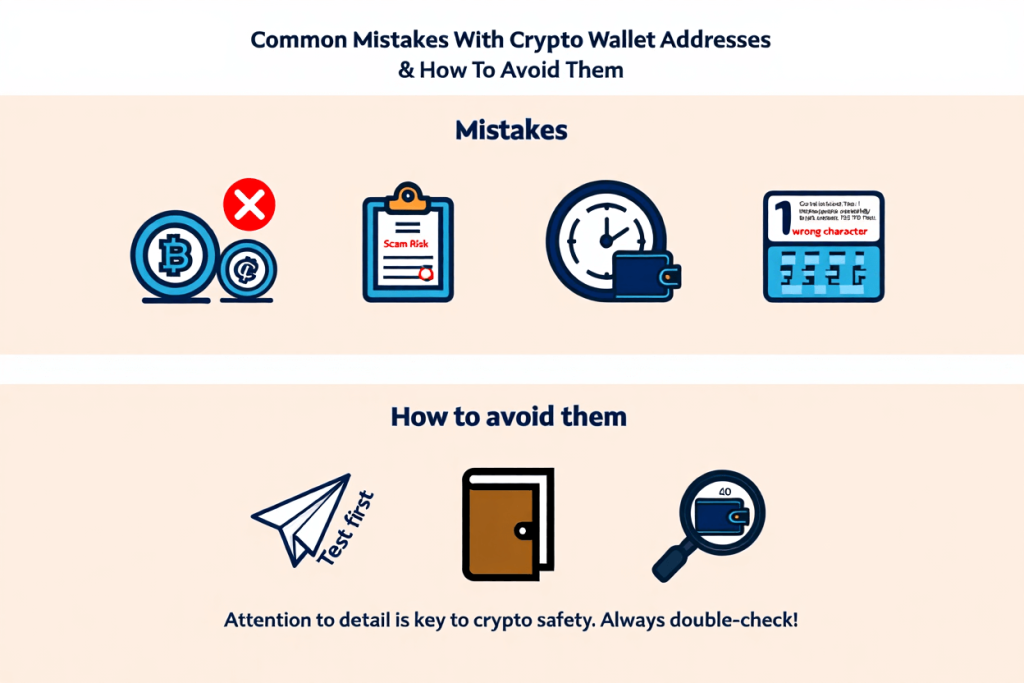Physical Address
304 North Cardinal St.
Dorchester Center, MA 02124
Physical Address
304 North Cardinal St.
Dorchester Center, MA 02124

Crypto wallet addresses are fundamental to the world of digital assets, acting as the unique destination for sending and receiving cryptocurrencies like Bitcoin and Ethereum. Think of them as digital account numbers that identify where assets should go on the blockchain. Without wallet addresses, you couldn’t transfer crypto securely or track its movement transparently.
If you’re new to this space, seeing a crypto wallet address example can help you understand how these identifiers work in real transactions. As the backbone of peer-to-peer (P2P) payments, wallet addresses play a vital role in making crypto decentralized and accessible. But for newcomers, the jumble of letters and numbers can be confusing, and every blockchain has its own format and rules.
This article will demystify crypto wallet addresses, showcase real examples, break down their structure, and deliver practical guidance on safe usage in 2025.
If you want to send, receive, or simply understand cryptocurrencies safely, knowing how crypto wallet addresses work is a must.
A crypto wallet address is a string of characters, usually letters and numbers, that serves as a public identifier for receiving digital assets on a blockchain network. Importantly, the address itself does not contain your funds; instead, it’s linked to balances tracked by the blockchain’s public ledger. Think of it as an email address for your crypto: anyone can send you assets, but only you (with your private key) can access or spend them.

Wallet addresses are generated from pairs of public keys and private keys. The public key is used to create the address and can be shared freely. The private key, however, is like a secure password; it proves ownership and control over the assets. Wallets, whether hardware (like Ledger, Trezor) or software (like MetaMask, Trust Wallet), help users generate and manage these keys and addresses.
| Wallet Component | Description |
|---|---|
| Wallet Software/Hardware | App or device that manages addresses and keys |
| Wallet Address | Public string used to receive crypto (e.g., 0x… for Ethereum) |
| Public Key | Mathematically derived; can be shared; creates the address |
| Private Key | Secret code; proves ownership; must be kept secure |
Understanding the distinctions between addresses, keys, and wallets is essential. Different blockchains use different formats, which is why examples are important for safe use, and that’s what we’ll cover next.
To explore similar concepts, check our crypto knowledge section for beginner-friendly explanations.
Each cryptocurrency uses its own style of wallet address, with unique prefixes, lengths, and structures. Quick visual recognition of the format is critical to avoid costly mistakes. Here’s a comparison of major crypto wallet address examples for 2025:

| Coin | Address Format | Example | Prefix/Pattern |
|---|---|---|---|
| Bitcoin (BTC) | Legacy (P2PKH), SegWit, Bech32 | bc1qar0srrr7xfkvy5l643lydnw9re59gtzzwf5mdq | 1, 3, bc1 |
| Ethereum (ETH) | Hexadecimal, EIP-55 | 0xde0B295669a9FD93d5F28D9Ec85E40f4cb697BAe | 0x |
| Litecoin (LTC) | Legacy, SegWit, Bech32 | ltc1qvfjrstkz5w5uw4675p8q4f0nj7zf4zqktvgmdd | L, M, ltc1 |
| Ripple (XRP) | Base58 w/tag | rDsbeomae4FXwgQTJp9Rs64Qg9vDiTCdBv | r |
| Cardano (ADA) | Bech32 | addr1q9r3d3s8t4s70yxx8uvnx4cyr2m7n0swemj9s4h0xwgrq2v9wz4xpl | addr1 |
| Solana (SOL) | Base58 | 7YkqUkWBUMHZHkVAb2RG8DnE93VgyQhU7Q2PDvB5yKKG | No specified prefix |
| Dogecoin (DOGE) | Legacy P2PKH | DDuTcSsawN1oTGDhyDXGiP5VCz8Q3xr5jB | D, A |
Addresses above are provided for example only, do not send transactions to these!
As shown, each format is visually distinct. Recognizing prefixes (like bc1 for modern Bitcoin), address length, or specific patterns helps users instantly identify the network and avoid costly cross-chain mistakes. Next, let’s explore why these formats look so different and how to interpret their structure.
Not all wallet addresses are created equal. Their character sets, prefixes, and structures are dictated by the blockchain’s technical requirements and security upgrades over time. Here’s how they break down:
Here’s a closer look at structural evolution:
Example Visual Cue: An Ethereum address always starts with 0x; a Bech32 Bitcoin address looks like bc1qar…. Recognizing these differences is essential not just for receiving the correct coin, but for verifying an address’s authenticity before transacting. (Tip: Consider using diagram visualizations showing address sections and highlighted prefixes for educational materials.) Understanding these properties aids in spotting fake addresses and ensuring funds go where intended.
See more related articles:
Correctly identifying and verifying crypto wallet addresses protects you from irreversible mistakes and scams. Here’s a streamlined guide:
Red Flags:
| Crypto | Typical Prefixes | Validation Tip |
|---|---|---|
| Bitcoin | 1, 3, bc1 | Check on blockstream.info |
| Ethereum | 0x | Validate with etherscan.io |
| Solana | No led prefix | solscan.io |
Always double-check addresses and, if possible, verify with a known sender or recipient, this is your best defense against fraud or mis-sent funds.
Below are common mistakes with crypto wallet addresses & How to avoid them:

Real-World Anecdote: Sending BTC to a Bitcoin Cash (BCH) 1… address, while addresses look similar in early formats, networks are not interoperable. Many users have irretrievably lost coins this way.
Attention to detail, especially with unfamiliar recipients or high-value transfers, is paramount to crypto safety.
Safeguarding your crypto begins with how you use and manage wallet addresses. Here are up-to-date best practices for 2025:
2025 Trends: More platforms are adding privacy options, hardware wallet confirmation screens, and built-in verification with AI-driven phishing detection. Stay up-to-date with wallet software and security protocols.
Smart address management is your first line of defense, stay alert, organized, and cautious with every transaction.
| Myth | Fact |
| All wallet addresses are interchangeable | Each coin and network has its own address style |
| Longer addresses are safer | Length is dictated by network design, not security alone |
| Addresses contain coins | Addresses control access, balances are on the blockchain |
Clear up confusion before you transact, and always reference official sources for up-to-date information.
| Term | Definition |
|---|---|
| Wallet Address | Public destination for crypto; e.g., 0x123…, bc1…, addr1… |
| Public Key | Cryptographic code linked to the wallet address; shared openly |
| Private Key | Secret cryptographic key that controls the wallet |
| Seed Phrase | Series of 12/24 words used to recover a wallet’s private keys |
| Prefix | Leading characters that indicate the address type/blockchain (e.g., 0x, bc1) |
| Checksum | Mathematical feature in addresses that helps detect typos |
| ENS | Ethereum Name Service, maps human-friendly names to wallet addresses, e.g., bob.eth |
| SegWit | Bitcoin/Litecoin update that enables greater efficiency; addresses use 3… or bc1… |
| Bech32 | Modern address format for error-checking; seen as bc1…, ltc1…, addr1… |
| Smart Contract Address | Ethereum or EVM-based program-controlled address |
| Multi-signature | Address requiring multiple approvals to process a transaction |
Understanding these terms helps you navigate the crypto ecosystem with confidence.
Crypto wallet addresses are the gateway to sending, receiving, and managing digital assets securely. Knowing how they work, from their formats and prefixes to practical safety steps, prevents mistakes and empowers both beginners and experienced users. As crypto adoption grows and security practices evolve in 2025, taking time to understand address types, verification, and best practices will help keep your funds safe and your crypto journey on track.
Web Tai Chinh is a trusted finance information platform, delivering up-to-date news and expert resources for investors and crypto enthusiasts, ensuring you understand the core concepts and latest trends before making financial decisions.
📞 Contact: 055 937 9204
✉️ Email: webtaichinh@gmail.com
📍 Address: 13 Ho Tung Mau, An Binh, Di An, Binh Duong